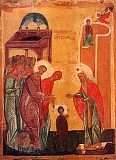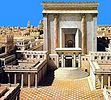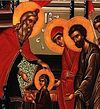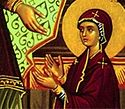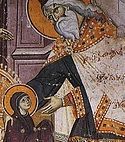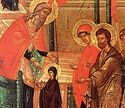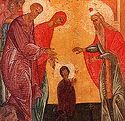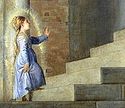

| Previous day | Next day |
| Old Style
November 21
|
Monday |
New Style
December 4
|
|
27th Week after Pentecost.
Tone 1.
Nativity Fast. |
Fish, wine and oil allowed.
|
![]() The Entry of the Most Holy Theotokos into the Temple.
The Entry of the Most Holy Theotokos into the Temple.
New Hieromartyr Alexander Khotovitsky, protopresbyter, of New York and Moscow (1937).
Icon of the Most Holy Theotokos “Everlasting Hope.”
St. Columbanus, abbot, and founder of the monasteries of Luxeuil (Gaul) and Bobbio (Italy) (615).
Repose of Blessed Pasha of Birsk, fool-for-Christ (1891).
Thoughts for Each Day of the Year
According to the Daily Church Readings from the Word of God
By St. Theophan the Recluse

Twenty Seventh Sunday After Pentecost. [Eph. 6:10-17; Luke 13:10-17]
On the feast of the Entry of the Most Holy Mother of God into the Temple, “Christ is born” is first sung, preparing believers for a worthy meeting of the feast of Christ’s Nativity. Having understood this inspiration, act according to it. Delve deeply into the mystery of the incarnation of the Only-Begotten Son of God, ascend to its beginning in the pre-eternal counsel of God concerning the existence of the world and man in it, see its reflection in the creation of man, meet joyfully the first tidings of it immediately after the fall, trace rationally its gradual revelation in Old Testament prophesies and prefigurations. Understand how and who prepared to receive God incarnate, under the influence of Divine educational institutions and activities within Israel—pass, if you want, across the borders to God’s people and gather there rays of God’s light, shining in the darkness—and ponder to what degree those chosen from among all nations reached the presentiment of the unusual manifestation of God’s providence for people. This will be a mental preparation. But now the fast has begun—collect yourself in order to prepare for Communion, go to confession and take Communion with the Holy Mysteries of Christ: this will be an active and living preparation. If, on account of all this, the Lord grants you to feel the power of His coming in the flesh—then, when the holiday comes, you will celebrate it not out of a joy foreign to you, but one of your own flesh and blood.
